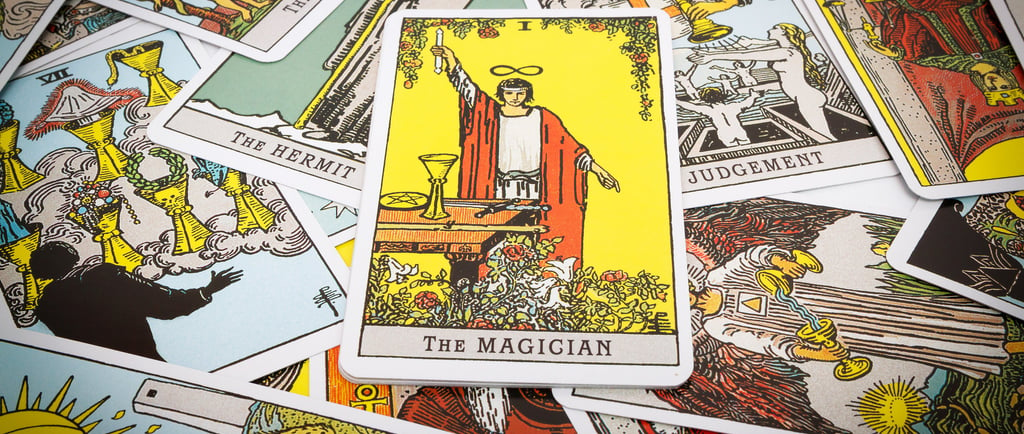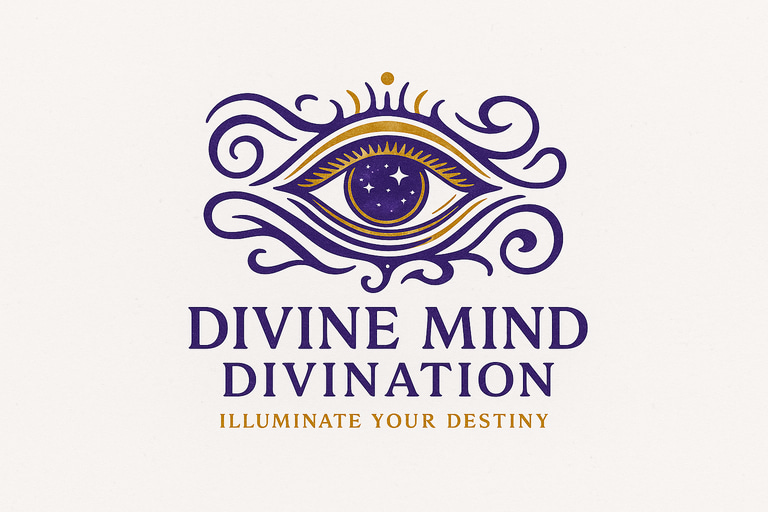Dive into the Mystical: Unraveling the History and Power of Tarot!
Embark on a captivating exploration into the world of tarot, a practice that has evolved from a medieval game to a powerful tool for personal insight and even therapeutic reflection. Delve into the rich symbolism of the Major and Minor Arcana, each card offering a unique lens on universal archetypes and everyday experiences. Discover how tarot spreads act as roadmaps, from simple one-card draws to more intricate layouts, providing guidance and clarity on specific questions or broader life situations. Embrace the art of intuitive interpretation, where your personal connection to the cards unlocks deeper meanings and fosters self-awareness. Whether you approach it with curiosity or a desire for self-discovery, tarot offers a timeless magic for understanding yourself and navigating life's journey.
GNLM & Hyrschall
4/3/20256 min read


Dive into the Mystical: Unraveling the History and Power of Tarot!
Hey there, fellow seekers and curious souls! Have you ever felt a tug towards something enigmatic, a whisper of hidden truths waiting to be revealed? For me, that irresistible pull has always been towards the captivating world of tarot cards. From the moment my eyes first landed on those intricate designs, I knew I was stepping onto a path filled with potent symbolism and compelling narratives. Buckle up, because I'm about to take you on an exhilarating journey through the history and fascinating power of tarot, and trust me, you won't want to turn back!
What Exactly Are These Enigmatic Cards?
At its core, tarot is a form of divination, a practice aimed at foretelling events or uncovering hidden knowledge. A standard tarot deck is a collection of 78 cards, each brimming with vivid imagery and steeped in potential meaning. This deck is traditionally divided into two main sections: the Major Arcana and the Minor Arcana. Think of the Major Arcana as the 22 big players, representing significant life lessons, spiritual themes, and universal archetypes – the grand story beats of our existence. The Minor Arcana, consisting of 56 cards divided into four suits (usually wands, cups, swords, and pentacles), fills in the everyday details, reflecting our personalities, emotions, and responses to life's events.
A Fascinating Trip Through Time: The History of Tarot
Our adventure begins not in a realm of mystical prophecies, but in 15th-century Europe, specifically in Italy. Believe it or not, the earliest known tarot-like cards weren't for gazing into the future but for playing a rather sophisticated game called tarocchi, which was quite similar to bridge. Imagine that! These beautifully hand-painted decks, such as the prestigious Visconti-Sforza deck, were commissioned by wealthy families as symbols of their status and artistic appreciation – a true high-society pastime. Interestingly, some early card fragments discovered in a Milan castle dating back to as early as 1499 suggest that tarot cards were also treated simply as a game at the time, casually discarded.
Fast forward a few centuries to the late 18th century in France, and the winds of change began to blow. This is when tarot embarked on its fascinating transformation from a mere card game into a tool for the occult and divination practices. Enter the scene Jean-Baptiste Alliette, a French occultist also known as Etteilla. He published the first definitive guide to tarot card reading, laying the groundwork for using these cards for spiritual and personal growth. Around the same time, a French clergyman and scholar named Antoine Court de Gébelin made a rather unfounded claim that he saw ancient Egyptian symbolism hidden within the cards, linking them to an ancient text called the Book of Thoth. Though this interpretation lacked factual basis, it gained popularity and contributed to tarot's mystical association.
By the late 19th century, tarot had evolved along two parallel tracks, becoming both a popular fortunetelling device and a key to esoteric knowledge. Perhaps the most influential tarot occultist group was the Hermetic Order of the Golden Dawn, a British secret society whose members included the poet W.B. Yeats. Another key member, Arthur Edward Waite, believed tarot held the key to a mystical renaissance. He commissioned artist Pamela Colman Smith, also a Golden Dawn member, to illustrate a new deck. The Rider-Waite-Smith deck, with its Art Nouveau style and illustrated Minor Arcana, became the most popular tarot deck in history and continues to influence most modern decks. However, it's worth noting that this deck has faced some criticism for its perceived lack of diversity. Aleister Crowley, another member of the Golden Dawn, created his own deck, the Thoth Tarot, and eventually exposed the society's secrets. Thus, tarot as we largely know it today was born – no longer just a game, but a mystical and divine tool.
In recent years, tarot has experienced an incredible resurgence in popularity. Thanks to the accessibility of decks and the vibrant energy of online communities and social media, more people than ever are drawn to its wisdom. You can find tarot inspiration flooding platforms like TikTok and Instagram, with readers sharing their insights and connecting with a global audience. Even mainstream culture has embraced its mystical allure, with fashion lines drawing inspiration from tarot imagery and beginner's guides popping up in unexpected places. It's clear that tarot's timeless magic continues to resonate deeply with the modern soul.
Unlocking the Secrets: Tarot in Divination
So, how does this deck of beautifully illustrated cards actually work for divination? The process often begins with shuffling the deck while focusing intently on a question or an area of your life you seek clarity on. Many believe this infuses the cards with your personal energy and intentions. Once the shuffling feels right, you then draw one or more cards and lay them out in a specific pattern called a spread.
Tarot spreads are like roadmaps for your reading, with each position in the layout offering a specific context for the cards drawn. There's a vast array of spreads to choose from, catering to different needs and questions. For a quick insight, a one-card spread, focusing on a single question or serving as a "card of the day," can be incredibly potent. The versatile three-card spread, often representing the past, present, and future, or perhaps the situation, challenge, and advice, is a fantastic starting point for beginners. For a more in-depth exploration, you might venture into the complexities of the five-card spread, which can delve into the "why" behind a situation and potential outcomes, or the classic Celtic Cross, a ten-card layout offering a comprehensive analysis of various aspects of a situation. You can even find spreads specifically designed for love and relationships, like the Three-Card Love Spread and the Compatibility H Tarot Spread, or more advanced layouts like the Horseshoe Tarot Spread and the Astrological Spread for deeper insights. The exciting thing is, once you gain some experience, you can even create your own spreads tailored to your specific inquiries.
The real magic of tarot lies in interpretation and intuition. Reading the cards involves understanding the rich symbolism embedded in each image and considering the relationships between the cards within the chosen spread. Your intuition plays a crucial role in connecting with the cards' messages and applying them to your situation. Each card in a spread interacts with the others, creating a narrative that reflects the querent's life and circumstances. Some readers also consider reversed cards (cards appearing upside down) to represent different or shadow aspects of a card's meaning.
When approaching tarot for divination, it's often advised to steer clear of closed, yes-or-no questions. Tarot excels at exploring the nuances and complexities of a situation, offering deeper insights than a simple binary answer. Instead, focus on open-ended questions that invite the cards to reveal the underlying energies, potential challenges, and possible avenues for growth.
Ultimately, tarot in divination isn't about predicting a fixed future. Instead, it serves as a powerful tool for self-reflection, offering guidance, and illuminating potential pathways. It helps you tap into your inner wisdom, understand your current situation from different perspectives, and explore possible outcomes based on your choices. As one insightful author put it, "Tarot is storytelling at its base. You are using the tool of the cards to elaborate someone’s story".
Building Your Own Mystical Connection
Building a personal relationship with your tarot deck is key to unlocking its full potential. The first step is choosing a deck whose imagery and artistic style truly resonate with you on a symbolic and intuitive level. Handling your cards with care and perhaps even cleansing them of any unwanted energy before use can deepen this connection. Many tarot enthusiasts find immense value in keeping a tarot journal, a dedicated space to record your readings, observations, and personal interpretations of the cards. This practice helps you track patterns, build your own unique "dictionary" of card meanings, and witness the unfolding stories over time. Remember, like any skill, practice makes perfect. Don't be afraid to start with simple spreads and gradually explore more complex layouts as you become more comfortable.
A Word of Caution: When to Step Away
While the allure of seeking guidance from the cards can be strong, it's important to know when not to read tarot. Louis and Wall both wisely advise against turning to the cards when you're feeling panicked or highly emotional, as your own state can heavily influence the reading. If you find yourself only open to hearing a particular message, it's probably best to wait until you have a more open and receptive mindset. Instead, if you're feeling stressed and seeking guidance, taking a moment to ground yourself – perhaps by taking a breath or having a cup of tea – before reaching for your deck can lead to much clearer and more insightful readings.
Beyond Divination: The Versatile Power of Tarot
While often associated with divination, the power of tarot extends beyond simply predicting the future. Many find it to be a valuable tool for personal growth and self-discovery. By exploring the symbolism and meanings of the cards, individuals can gain deeper insights into their own thoughts, emotions, and behaviors. Some psychotherapists even utilize tarot for therapeutic purposes, comparing the experience to viewing art in a museum and allowing the imagery to unlock memories and facilitate self-reflection. Interestingly, tarot has also found a niche as a tool for writers, helping to spark creativity and develop characters and story arcs.
Embark on Your Own Enchanting Journey
My own journey with tarot has been nothing short of transformative. It's been a mirror reflecting my inner landscape, a wise counselor offering gentle nudges, and a constant source of fascination. Whether you're drawn to its historical roots, its rich symbolism, or its potential for personal discovery, the world of tarot awaits your exploration. So, take a deep breath, perhaps find a deck that calls to you, and embark on your own thrilling adventure into this timeless and magical art. You might just be surprised by the profound insights you uncover!
